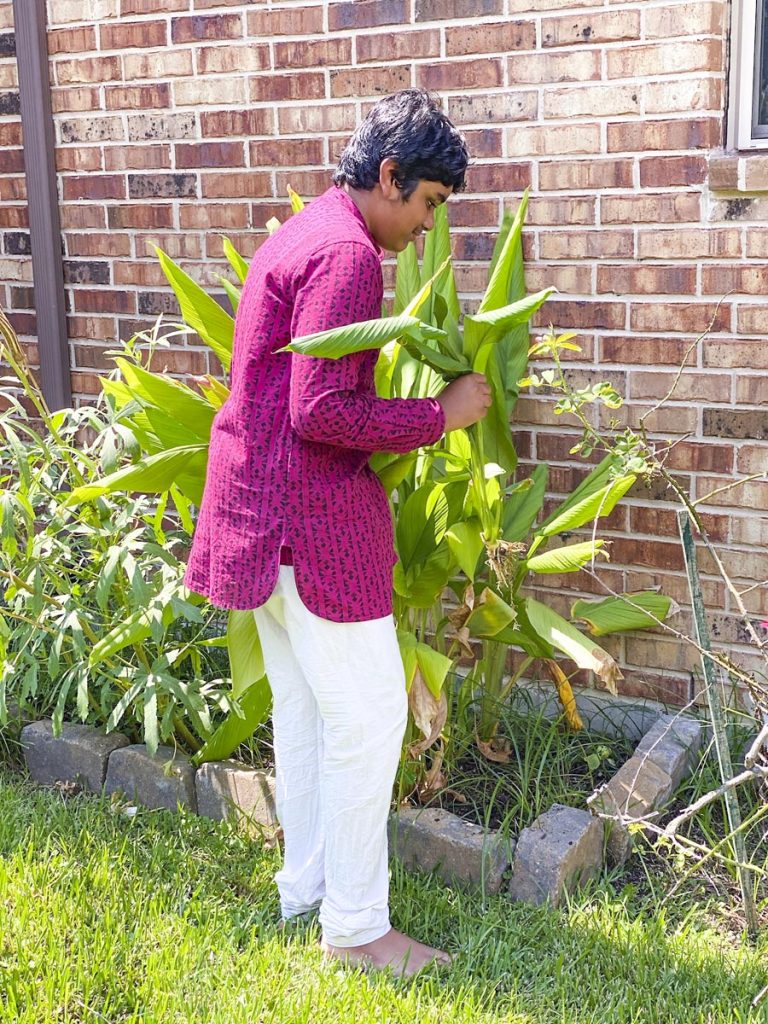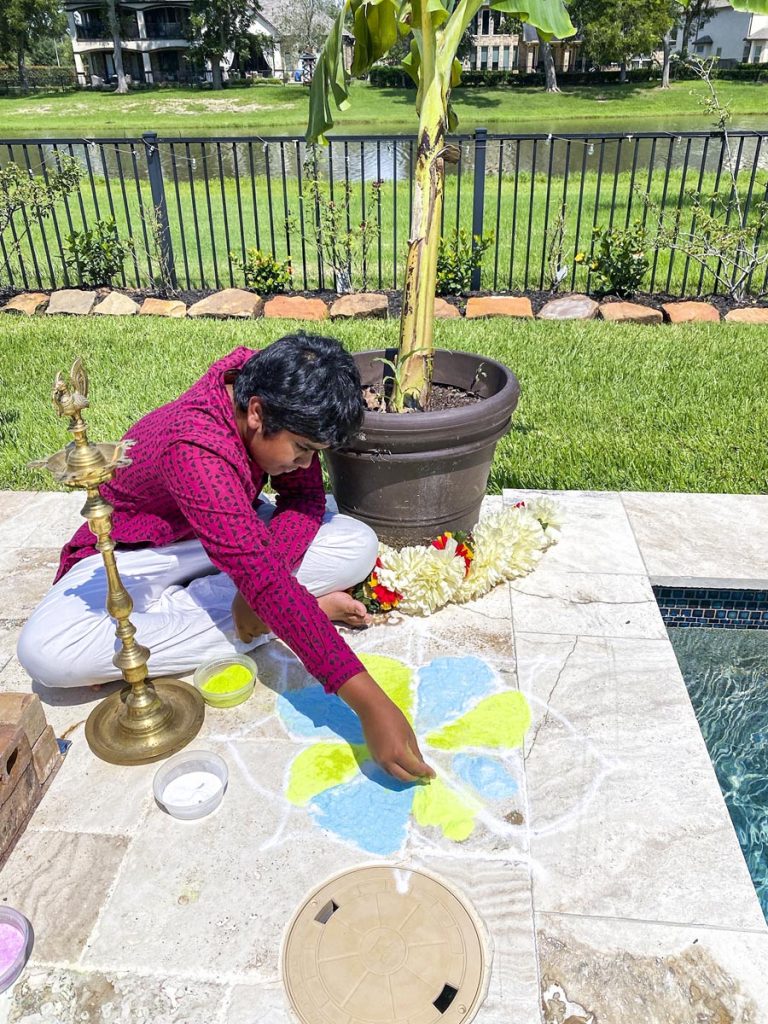How my family celebrates Thai Pongal
By Krathu Sankaranarayanan
As the well-known holidays of Christmas and New Year’s Day end, the festival of Thai Pongal just begins for my family. Young dancers and musicians learn new steps and songs, cooks gather ingredients for the signature dish, and women paint kolam designs at entrances.
Thai Pongal is a multi-day harvest festival observed by the Tamil people. It is celebrated to commemorate the hard work in the field and the collection of the harvest. We make a unique dish called pongal which speaks to the occasion. It has two varieties: sweet (chakarai pongal) and savory (venn pongal). Because Pongal is a celebration of the harvest in South India, it is prepared using the two most common products, rice and lentils, mixed mainly with milk, butter and jaggery. The Pongal festival is celebrated by many people, and the holiday stretches from India and Sri Lanka all the way to places like the USA, Malaysia, Mauritius and the UK. Wherever Tamils migrate, this festival has always traveled with them. It marks the beginning of the month Thai on the Tamil lunisolar calendar. It typically falls on January 14. This festival is also held to honor the Sun and, as such, is dedicated to the God Surya. My family observes three important days for this occasion.


The first day of celebrations is Bhogi Pongal, for us a time of preparation. We wake up very early in the morning to prepare the house. My brother and I start by cleaning our rooms, keeping an eye out for items we don’t use anymore—old toys, clothes, and furniture. After that, my family and I move on to other areas of the house, and then we gather all the unused items and sort them. Items that can be still used by other people, like old toys and clothes, go to thrift stores such as Goodwill. Things that cannot be used anymore are discarded. Traditionally in India, people will burn these things to welcome in positive energy. However, since we are in America, we cannot do that, and we instead donate and discard them. It’s almost like the Tamil version of spring cleaning.
Next is to decorate the house. We live in tropical Houston, so we grow many Indian plants in our backyard. I pick flowers, mango and banana leaves, and turmeric. I then string the mango leaves onto a thread, creating a garland. This garland is hung in the doorway of the prayer room. Next, my mom and I make a kolam outside. Kolam is an integral part of the festival. It is a pattern made from rice flour that is drawn on the entrances and prayer areas of houses. We draw kolam because it is said to bring prosperity into the household and feeds the insects outside. Once we finish up, we are done with the festivities of Bhogi Pongal.


The next day of the festival is Surya Pongal. It’s the main day of the three-day festival and coincides with Makara Sankranti, when the Sun enters the zodiac sign of Makara or Capricorn. This day is mainly to honor the Sun God, Surya. Without Surya Bhagavan’s energy, agriculture wouldn’t even be possible, which is why we honor Him this day. We make the pongal dish today, starting with cleaning and preparing the cooking area. The pongal must be cooked in a place that is in full view of the Sun; because of this, we cook it outside. We sweep the area, then set up bricks in a square formation and place the pots on top of it. My family decorates the pot by tying a turmeric plant around the top. We then light a fire under the pots and begin to cook the dish. The word pongal means to “overflow” in the Tamil language. Once the dish begins to overflow out of the pot, we all say, “Pongalo Pongal!” It symbolizes the wishes for greater fortunes in the years ahead. Once the pongal is done cooking, it is offered to the Gods and Goddesses as prasadam. After all of this, we can finally enjoy this amazing dish.
The third and last day is Maatu Pongal, celebrated by honoring cows. Cattle are a big help in planting, growing and harvesting crops, so we honor them. In India, cows are bathed, horns painted, bells tied around their necks, and garlanded. A traditional game called Jallikattu is also played in which an angry cow is released and players have to tame it. Since we live in the US, we cannot celebrate it like that and instead visit the temple and pray there. Our temple holds an annual Pongal cultural event with artistic performances such as Bharatanatyam, folk dance, singing and kolam competition. Some years we even volunteer at cow sanctuaries.
Another thing we celebrate on the third day is Kanum Pongal. Kanum means “viewing” or “seeing” in Tamil. The significance of this day is that the women of the house pray for the prosperity and good health of their brothers. Villagers cut and consume sugarcane at social gatherings. Relatives and friends visit and greet each other, while younger people will visit their seniors for blessings. This marks the end of all the Pongal festivities. It’s a magical time when I truly appreciate my heritage. ∏π
Krathu Sankaranarayanan is an 8th grader from Houston, Texas. He loves volunteering in his local community and enjoys writing, swimming, coding and science.


